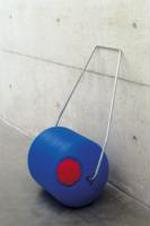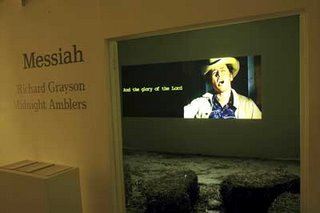sylvia loves peter madden...

"ssshhh" 2005
metallic foil, acrylic, wood, found objects
this guy looks bloody cool! what grabbed me about this piece was the regal magnificence of his golden horns and the fact that he is chowing down on butterflies.
i feel a really magical vibe from this work, as if rams really do eat butterflies for breakfast. i like the small detail and the fact that he has made it out of found objects. i really like it for its composition and formal qualities. its all about the nature in this one, with the small bird nesting in his twig/antlers. the red tears? ... perhaps because he is mounted on a wall. im still not quite sure, but i know i think its cool. what do you reckon?
madden is a NZ born artist. his works explore co-dependance, cycles of death and transformation. he has exhibited in the Sao Paulo Biennale, and has collaborated with Sam Sampson.
Artlink, Vol 26, # 2
p.s i find it amusing that he works with sheep & is from NZ.












